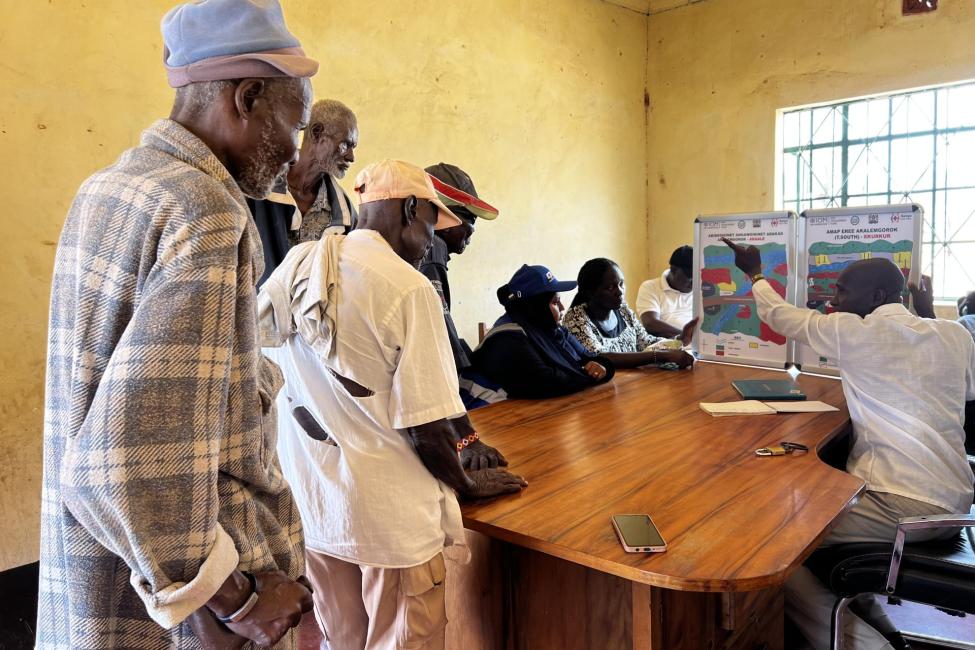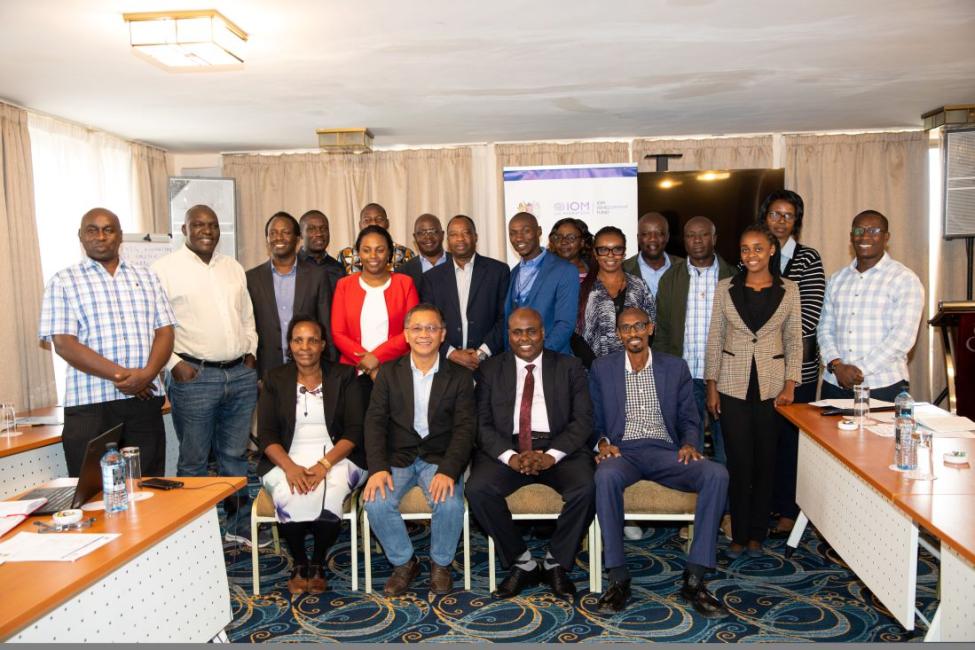-
Who We Are
WHO WE AREIOM is the leading inter-governmental organization promoting humane and orderly migration for the benefit of all, with presence in over 100 countries. IOM has had a presence in Kenya since 1983.
About
About
IOM Global
IOM Global
-
Our Work
Our WorkAs the leading inter-governmental organization promoting humane and orderly migration, IOM plays a key role to support the achievement of the 2030 Agenda through different areas of intervention that connect both humanitarian assistance and sustainable development. Across Kenya, IOM provides a comprehensive response to the humanitarian needs of migrants and internally displaced persons.
- Data and Resources
- Take Action
- 2030 Agenda
Tana River - Named after Kenya’s longest river, the coastal Tana River County is known for its recurring floods caused by heavy rainfall in upstream areas. On the other side of the country, in an area that forms part of the Great Rift Valley, Turkana County also suffers from similar hazards. Though far from the ocean, Turkana County experienced frequent flash floods and spillovers, especially since 2020.
The two counties in Kenya are among the Arid and Semi-Arid Lands (ASALs) most affected by extreme weather patterns such as floods, drought, and landslides. This has had a profound effect on the pastoral communities who live here; many are now trekking farther with their animals in search of water and pasture for their livestock. In recent months, the prolonged drought has severely affected the ASAL region of Kenya, leading to the displacement of over 465,000 people from the five counties of Garissa, Turkana, Marsabit, Isiolo and Samburu, which has also been exacerbated by natural resource-based conflicts between pastoral communities, primarily concerning water and grazing space.
For women, displacement comes with its own set of challenges and needs, particularly for the pregnant and those with young children.
“When hazards strike, women and children are often forced to move, and some suffer physical injuries making it difficult for them to travel longer distances. This situation is made worse by already existing inequalities that prevent women from finding adequate shelter, food, and water,” says Rukia Kuno, a 40-year-old woman from Tana River County who was nominated as a community volunteer and a disaster risk reduction and management (DRRM) committee member. She further explained that women are exposed to personal hygiene and sanitation issues and often suffer from domestic violence and harassment when seeking refuge.
Despite the recurring effects caused by these extreme weather patterns, women are still excluded from political, community and household decision-making processes that impact their lives. To increase women’s active participation and involvement in DRRM, IOM Kenya with funding support from the IOM Development Fund has been implementing a project, “Gender and Vulnerability-Sensitive Disaster Risk Reduction and Community Resilience in Turkana and Tana River Counties”, that seeks to empower communities with a focus on women, youth and most vulnerable individuals.
IOM has been supporting the organizational strengthening of existing DRRM committees, both at the county and community levels of Turkana and Tana River. Women’s participation in these committees has been traditionally low at just 18 per cent and one of the project’s first priorities was to ensure women were better represented in these processes. With the nomination of women like Rukia, women membership increased to 48 per cent.
Established to empower community members to prepare for and respond to disasters, DRRM committee members took part in training and awareness raising on hazards and related preparedness actions in 2022 and early 2023. This focused on the most vulnerable households, including women and youth who are members of DRRM committees. The committees have been instrumental in sharing critical information such as safe locations for evacuation in flood prone areas during the rainy season. Within the risk identification and assessment process, the committees further developed hazard maps and hazard problem trees as part of their early warning system, thus contributing to preparedness and prevention of loss of lives and livelihoods. The EWS has also been strengthened through the development of evacuation plans which includes a communication system between vulnerable communities residing in nearby riverbanks upstream and communities in low lying areas.
In addition to Rukia’s work as a DRRM committee member and community volunteer, she currently champions awareness sessions on disaster preparedness and response in her community, reaching over 500 women.
IOM Kenya is strengthening the active participation of the County Steering Groups of Turkana and Tana River counties by incorporating gender and vulnerability responsive disaster risk reduction plans into their County Integrated Development Plans 2023–2027. In the last 18 months of project implementation, a remarkable change in women’s active participation has been evident with 45 per cent attending DRR community-based training compared to only 18 per cent in the first year of project implementation. - Dimanche Sharon, Chief of Mission, IOM Kenya
The establishment of these committees has enhanced timely communication and rapid response measures thus minimizing the damage caused by hazard events. IOM continues to build the committees’ capacities and is providing them with the tools they need to enhance disaster preparedness and response. For example, community radio stations and door-to-door campaigns have been initiated by the committee members to disseminate the information to their respective communities.
Through its adaptation and resilience initiatives supported by the IOM Development Fund, IOM is dedicated to assisting the Government of Kenya in enhancing its early warning systems and improving the capacity of local communities to swiftly respond to climate shocks and disasters.
The Government fully supports IOM interventions by taking the lead role in planning and setting up the agenda for consultative meetings, spearheading the Technical Working Group (TWG) in developing and drafting the gender and vulnerability-sensitive National Shelter Strategy (NSS). The State Department further commits to represent the TWG during presentations and review of the draft National Shelter Strategy at the national and county government stakeholder forums and lead in the finalization, dissemination, and implementation of the strategy. - Mr. Idris Dokota, Principal Secretary of the State Department of Arid and Semi-Arid Lands and Regional Development


